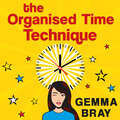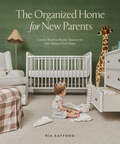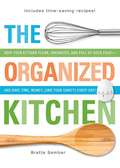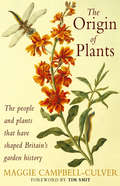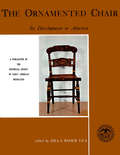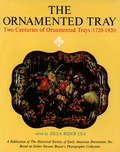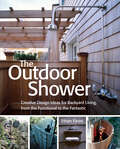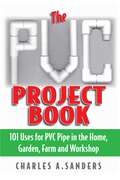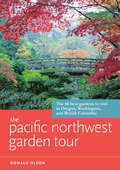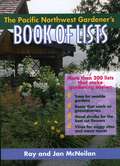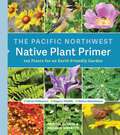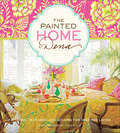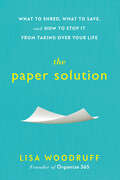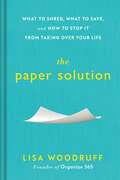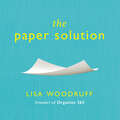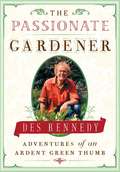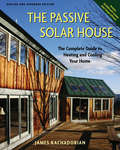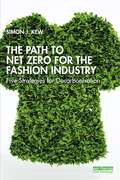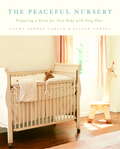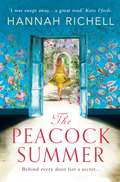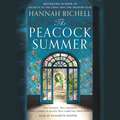- Table View
- List View
The Organised Time Technique: How to Get Your Life Running Like Clockwork
by Gemma BrayThe new life-changing technique from Gemma Bray - creator of The Organised Mum Method'Ingenious' Daily MailDo you ever get to the end of the day and feel like you've achieved nothing? Do you find it difficult to decide how to spend the small amount of free time you have? Do you ever wonder how some people seem to be able to fit everything in? If you're feeling overwhelmed by all the things you need to squeeze into your day, unproductive or stuck in a daily routine that isn't making you happy, The Organised Time Technique is for you. This is Gemma Bray's unique method for organising your day that will stop you from trying to do everything (and feeling like a failure when you can't), keep you focused on how you use the time you have available, help you play to your strengths and, most importantly, help you find time for the things that really matter. The Organised Time Technique provides the tools - and the headspace - you need to create a framework for your life that means you will always know where you are supposed to be, what you are supposed to be doing and when you are supposed to be doing it. By following the plan, you will not only get everything done, but also create space for the things that you really want to do, whether that's taking up a new hobby, reading a book, starting a side business or simply having a long, relaxing bath!Just as The Organised Mum Method helped you to feel on top of the housework, The Organised Time Technique will revolutionise the way you spend your day. In no time at all, you will go from feeling flustered to feeling fabulous.Are you ready?
The Organized Home for New Parents: Create Routine-Ready Spaces for Your Baby's First Years
by Ría Safford&“A must-have for any new or expecting parent." —Jesse Tyler Ferguson Learn how to safely and conveniently prepare your home for life with a baby or toddlerAs a new or expecting parent, you&’re bombarded with seemingly endless advice—from how to nurse or feed your child to how to sleep and potty train them. But conventional guidance misses a crucial aspect of the early years of parenting: how to organize your home for life with your little one.From dirty dishes piling up to heaps of new toys and clothes in every corner of your home, life with young kids can be, well, a lot. Thankfully celebrity organizing expert and mom of three Ría Safford is here to help. After learning and mastering her own systems of home organization, she has made a career out of helping parents create functional, routine-ready spaces to make more time for what matters most. In The Organized Home for New Parents, you&’ll learn how to: Prioritize the newborn necessities you&’ll need—with easy checklists and charts Organize your nursery, stroller, and diaper bag Make breastfeeding, pumping, and solid food prep more manageable Set up diaper-changing and feeding stations throughout the home Cycle clothes, toys, and other items out of the home as your child grows Arrange your spaces to easily reset them when messes take over Tackle the growing pile of laundry Prepare for travel and life on the go with babies and toddlersFeaturing gorgeous illustrations and photos from inside real families&’ homes, this practical guide for new parents is the perfect baby shower present or gift for new parents. With equal parts humor, candor, and insight, this book will be your lifeline through this hectic, unpredictable season of life and empower you to create a safe, organized, and comfortable home for your growing family.
The Organized Kitchen: Keep Your Kitchen Clean, Organized, and Full of Good Food—and Save Time, Money, (and Your Sanity) Every Day!
by Brette SemberAn organized kitchen is the salvation every busy cook needs! You'll save yourself time, money, and stress-all while whipping up delicious, healthy meals your family and friends will love.From aprons to zesters, this book provides an A-Z of simple shortcuts that will make all the difference, including:Shelf and storage strategiesFive-minute kitchen feng shuiWhen to clean what-with whatThe right tools for the right tasksThe truth about freezing foodMeal plans that really workTen foolproof, must-know recipes-with endless variationsThe good-enough stocked pantryLeftovers you'll really want to eatWith tips and tricks from master chefs (think Julia Child's pegboard) and real-life home chefs (think Grandma's ingenious pasta pots), this is the only kitchen/food/life organizer you need to streamline your kitchen-once and for all!The Organized Kitchen: Because you can minimize cooking time and maximize good taste!
The Origin Of Plants: The People And Plants That Have Shaped Britain's Garden History
by Maggie Campbell-CulverA fascinating history of Britain's plant biodiversity and a unique account of how our garden landscape has been transformed over 1000 years, from 200 species of plant in the year 1000 to the astonishing variety of plants we can all see today. Thousands of plants have been introduced into Britain since 1066 by travellers, warriors, explorers and plant hunters - plants that we now take for granted such as rhododendron from the Far East, gladiolus from Africa and exotic plants like the monkey puzzle tree from Chile.Both a plant history and a useful reference book, Maggie Campbell-Culver has researched the provenance and often strange histories of many of the thousands of plants, exploring the quirky and sometimes rude nature of the plants, giving them a personality all of their own and setting them in their social context. The text is supported by beautiful contemporary paintings and modern photographs in 2 x 8 pp colour sections.
The Ornamented Chair
by Zilla Rider LeaDiscriminating decorators and collectors, no less than dealers and researchers in antiques, have long felt the need of a comprehensive study of the ornamented chair and its development in America. This book is the product of an effort to satisfy that need and at the same time to bring new pleasures to lovers of beautiful furniture.The book is based on photographic and research material collected by the late Esther Stevens Brazer, who spent a lifetime in the study and revival of early American decoration.The authors are all qualified researchers, teachers, and decorators. In their text they present a general history of chair types, facts regarding ornamentation, and informative accounts of some of the leading craftsmen and decorators of the various periods. The final chapter of the book briefly relates the history of the Society and describes how its members carry forward the efforts of Esther Stevens Brazer, maintaining in their research, their teaching, and their restorations the standards of an old craft and the traditions of its finest workmen.
The Ornamented Chair
by Zilla Rider LeaDiscriminating decorators and collectors, no less than dealers and researchers in antiques, have long felt the need of a comprehensive study of the ornamented chair and its development in America. This book is the product of an effort to satisfy that need and at the same time to bring new pleasures to lovers of beautiful furniture.The book is based on photographic and research material collected by the late Esther Stevens Brazer, who spent a lifetime in the study and revival of early American decoration.The authors are all qualified researchers, teachers, and decorators. In their text they present a general history of chair types, facts regarding ornamentation, and informative accounts of some of the leading craftsmen and decorators of the various periods. The final chapter of the book briefly relates the history of the Society and describes how its members carry forward the efforts of Esther Stevens Brazer, maintaining in their research, their teaching, and their restorations the standards of an old craft and the traditions of its finest workmen.
The Ornamented Tray: Two Centuries of Ornamented Trays (1720-1920)
by W. D. John Zilla Rider LeaThis authoritative and definitive work contains the first formal history of antique trays every published. Each of its six chapters is written by a different authority. <P><P>They discuss:Lace-Edge PaintingThe "Chippendale" StyleTrays Ornamented with Gold LeafThe Freehand Bronze TechniquesStenciled TraysThe Country Painted TrayThe book is lavishly illustrated with more than 500 photographs, seven of them in full color, including pictures of trays prized by museums and private collectors, as well as hundreds selected from the unique photographic collection of the late Esther Stevens Brazer.
The Outdoor Kitchen: Live-Fire Cooking from the Grill [A Cookbook]
by Eric Werner Nils BernsteinAnyone can learn to cook outside over a fire with this dazzling guide to setting up an outdoor kitchen, featuring practical tips and 80 recipes from the award-winning chef of Hartwood in Tulum, Mexico.Chef Eric Werner cooks nearly every dish served at Hartwood over wood fire, without gas or electricity, and when he's not at the restaurant, he's making delicious meals for his family, grilled in his own backyard outdoor kitchen. In this book, Werner shares the secrets to and recipes for simple, unrestricted, foolproof outdoor cooking in a way that reimagines the way you cook at home. Whether you already have a grill or have never cooked outdoors before, The Outdoor Kitchen provides all the tools and inspiration you need. Featuring step-by-step blueprints for constructing your own outdoor kitchen plus variations and modifications for store-bought grills, this handbook shows you how to build a high heat quickly and achieve a perfect sear. The recipes range from grilled meats, fish, and vegetables to marinades, quick pickles, cocktails, and desserts, including: • Grilled Lamb Chops and Burnt Cherries • Rib Eye for One with Onion Jam • Salmon and Almond-Tarragon Salsa Verde • Grilled & Pickled Zucchini • Grilled Romaine with Smoked Fish Dressing • Burnt Strawberry Ice CreamWhether you're cooking for yourself or your family on a weeknight or entertaining guests on the weekend, all the recipes are straightforward, with just a few ingredients and simple methods, for dishes that emphasize fresh flavor and the magic of wood-fired cooking.
The Outdoor Shower: Creative design ideas for backyard living, from the functional to the fantastic
by Ethan FierroAn outdoor shower is one of summer’s greatest pleasures. Providing practical building instructions for a variety of designs that range from a simple showerhead on the side of a cottage to a freestanding structure enclosed in frosted glass, Ethan Fierro shows you how to build an outdoor shower that reflects your unique personality and style. With an eye toward keeping costs down and environmentally friendly construction practices, Fierro will inspire you to create the shower of your dreams.
The Oxford Companion to the Decorative Arts
by Harold OsborneThe scope of this Companion extends over all the main fields of decorative craftsmanship--as well as a number of minor and specialized ones. It includes prehistoric crafts, crafts like leather-working and ceramics that have arisen more recently, and specialized crafts, such as toys and embroidery. There are also entries on important craftsmen and schools and surveys of specific cultures and periods. All the articles are written by expert contributors and the text is illustrated throughout with photographs and line drawings.
The PVC Project Book: 101 Uses for PVC Pipe in the Home, Garden, Farm and Workshop
by Charles A. SandersPVC pipe is cheap, versatile, durable and simple to work with. Homesteader Charles Sanders has come up with 101 projects that can be constructed from PVC piping, including a small-scale greenhouse, hanging planters, livestock or pet feeders, gutter cleaners, and a wide range of containers, holders, and racks for just about anything. WIth dozens of different types of fittings and couplings, almost any PVC project is a snap. Enterprising homesteaders are constantly coming up with new uses for the stuff--The PVC Project Book will inspire readers to create their own.
The Pacific Northwest Garden Tour: The 60 Best Gardens to Visit in Oregon, Washington, and British Columbia
by Donald Olson“Your must-visit list of Northwest gardens is finally organized and illustrated.” —Sunset Oregon, Washington, and British Columbia have a wealth of top-notch public gardens. In The Pacific Northwest Garden Tour veteran travel writer Donald Olson highlights sixty of the most outstanding options and provides all the information you need to make the most of your visit. This gorgeous and useful guide includes cherished public gardens and a handful of the most groundbreaking nurseries. Packed with memorable stories and stunning photography, it is a fantastic garden tour that only the scenic Pacific Northwest can provide.
The Pacific Northwest Gardener's Book of Lists
by Ray McNeilan Jan McNeilanThe Pacific Northwest Gardener's Book of Lists is the definitive gardening guide for gardeners in this area. Included are such interesting lists as: annuals that attract beneficial insects, perennials for autumn color, hostas for full sun, annuals for dry shade, trees with weeping character, and more.
The Pacific Northwest Native Plant Primer: 225 Plants for an Earth-Friendly Garden
by Kristin Currin Andrew MerrittNative plants bring your garden to life—and life to your garden! Here are the best choices for Oregon and Washington. The benefits of native plants are enormous—they reduce maintenance, require less water, and attract vital, earth-friendly pollinators like birds, butterflies, and bees. Gardeners seeking to add them to their landscape will find no better guide than The Pacific Northwest Native Plant Primer. Packed with proven advice that everyhome gardener can follow, this incomparable sourcebook profiles 225 recommended native wildflowers, grasses and grasslike plants, ferns, shrubs, and trees. With additional introductory information on preparation, planting, maintenance, and climate considerations, it&’s everything you need to know to create a beautiful and beneficial garden. This must-have handbook is for gardeners in Oregon, Washington, and southern British Columbia.
The Painted Home by Dena: Patterns, Textures, and Colors for Inspired Living
by Dena FishbeinA renowned designer shares surprising ways to add color, texture, and creativity to your home. In this beautifully illustrated book, the woman behind internationally acclaimed merchandise company Dena Designs shows how her hand-painted style combines vintage and traditional elements with a modern twist. Pick up a paintbrush and take a walk through the author&’s own home, room by room, as she discusses her inspirations and demonstrates her methods for encouraging creativity. The Painted Homeby Dena features simple DIY projects, useful design tips, and personal stories from one of the most successful entrepreneurs in the textile and design business.
The Paper Solution: What to Shred, What to Save, and How to Stop It From Taking Over Your Life
by Lisa WoodruffFrom the "Marie Kondo of paper" comes a simple and accessible guide to paper management.Americans are drowning in paper. We keep stacks of it on the kitchen counter, stash it in drawers, and store file cabinets full of documents that we never even look at. Studies show that fully 85 percent of the paper in our lives can be tossed--but which 85 percent? And how do we organize and manage the 15 percent that remains? With The Paper Solution, founder of Organize365 Lisa Woodruff delivers a proven, step-by-step guide for what to shred, what to save, and how to sort what's left behind. With her method, you'll learn: • What documents you must absolutely hold on to • Which papers you can dispose of today • How to ditch your bulky filing cabinets and make your vital documents accessible and portable And at the heart of it all is the Sunday Basket: a box that sits on your counter and corrals those stray bills, forms, coupons, and scraps into an easy-to-use paper-management system. The Sunday Basket will become your new weekly habit--one that leads to less paper, less stress, and more time to spend on the things (and people) that matter most.
The Paper Solution: What to Shred, What to Save, and How to Stop It From Taking Over Your Life
by Lisa WoodruffWe are drowning in paper. We keep stacks of it on the kitchen counter, stash it in drawers, and stuff file cabinets full of documents (just one file cabinet can hold 18,000 sheets of paper - yikes). Despite this clear crisis of paper, there hasn't been a book devoted to managing and organizing this single most abundant item in our homes - until now.In The Paper Solution, Lisa Woodruff delivers a proven, step-by-step guide to decluttering the paper in our lives and sorting what's left behind into easily accessible, structured, and, most importantly, manageable files. The system Woodruff offers isn't based on unrealistic advice, such as 'touch a piece of paper only once'. Instead, it accounts for paper's unique qualities: its sentimental value, ability to accumulate astonishingly fast, the generational differences in how it's treated, and the fact that it's not going anywhere despite the popularity of minimalism movements such as Kon Mari. Woodruff's approach is doable, effective, and compassionate.Much more than simply cleaning out your files, The Paper Solution will help you organize your paperwork with a purpose-removing the heavy burden of a chaotic mess and giving you the space and time to enjoy what you love and discover a sense of peace.
The Paper Solution: What to Shred, What to Save, and How to Stop It From Taking Over Your Life
by Lisa WoodruffWe are drowning in paper. We keep stacks of it on the kitchen counter, stash it in drawers, and stuff file cabinets full of documents (just one file cabinet can hold 18,000 sheets of paper - yikes). Despite this clear crisis of paper, there hasn't been a book devoted to managing and organizing this single most abundant item in our homes - until now.In The Paper Solution, Lisa Woodruff delivers a proven, step-by-step guide to decluttering the paper in our lives and sorting what's left behind into easily accessible, structured, and, most importantly, manageable files. The system Woodruff offers isn't based on unrealistic advice, such as 'touch a piece of paper only once'. Instead, it accounts for paper's unique qualities: its sentimental value, ability to accumulate astonishingly fast, the generational differences in how it's treated, and the fact that it's not going anywhere despite the popularity of minimalism movements such as Kon Mari. Woodruff's approach is doable, effective, and compassionate.Much more than simply cleaning out your files, The Paper Solution will help you organize your paperwork with a purpose-removing the heavy burden of a chaotic mess and giving you the space and time to enjoy what you love and discover a sense of peace.(P)2020 Penguin Audio
The Papermaker's Companion: The Ultimate Guide to Making and Using Handmade Paper
by Helen HiebertCraft your own colorful paper goods and personalized stationary. With clear, step-by-step instructions, Helen Heibert covers all aspects of the papermaking process — from growing and harvesting plants for a malleable paper pulp to embellishment techniques like dyeing, embossing, and laminating. With tips on building your own papermaking equipment, ideas for transforming junk mail into dazzlingly unique notecards, and much more, you’ll be inspired to let your creativity shine as you explore the endless possibilities of handcrafted papers.
The Passionate Gardener
by Des KennedyIn this rollicking read, Des Kennedy demonstrates his unerring skill with a satirical pitchfork. The 13 short pieces here roam widely and wildly, examining, among other things, common idiosyncrasies and the collective chaos of garden clubs. The book hilariously ponders the host of psychopathologies that afflict "plants people," from weather phobias and general anxiety disorders to obsessive-compulsive behavior such as the chronic moving of plants. Whether discussing dysfunctional garden sprayers or malodorous urine collection schemes, Kennedy finds both the magic and the madness in one of life's most popular passions.
The Passive Solar House
by James KachadorianRevised and Expanded Edition-Includes CD-ROM with Custom Design SoftwareFor the past ten years The Passive Solar House has offered proven techniques for building homes that heat and cool themselves, using readily available materials and methods familiar to all building contractors and many do-it-yourself homeowners. True to this innovative, straightforward approach, the new edition of this best-selling guide includes CSOL passive solar design software, making it easier than ever to heat your home with the power of the sun. Since The Passive Solar House was first published, passive solar construction expert James Kachadorian has perfected user-friendly, Windows-compatible software to supplement the design process explained in the book by allowing homeowners/designers to enter the specifications of their design and see how changing a variable will affect its energy efficiency. This is the building book for a world of climbing energy costs. Applicable to diverse regions, climates, budgets, and styles of architecture, Kachadorian's techniques translate the essentials of timeless solar design into practical wisdom for today's solar builders. Profiles of successful passive solar design, construction, and retrofit projects from readers of the first edition provide inspiration to first-time homebuilders and renovators alike.
The Path to Net Zero for the Fashion Industry: Five Strategies for Decarbonisation
by Simon J. KewThis book uses a quantitative science-based approach to explain where the greenhouse gas (GHG) emissions emitted by the fashion industry are generated and it explores what strategies can be deployed to achieve Net Zero by 2050. With GHG emissions currently predicted to triple by the middle of the century, the fashion industry is far off course to reach Net Zero, as set out in the Paris Agreement. With misinformation and greenwashing representing an ever-growing barrier to potential solutions, the book aims to demystify the source of GHG emissions from the industry, breaking down in detail their origin, while identifying the steps that can be taken when designing and sourcing new products. Detailing the market drivers and trends in fashion consumption, it argues that change should be guided by science-based quantitative principles. Accessibly written with key insights at the end of each chapter, this book will enable the reader to understand the tactics to tackle decarbonisation, and ultimately outline five main strategies that can be deployed by the fashion and textile industries to align with the Paris Agreement. This book serves as a practical guide for designers, buyers and the fashion industry in general to develop and understand approaches and strategies to reduce energy consumption and the resulting GHG emissions to reach Net Zero.
The Peaceful Nursery: Preparing a Home for Your Baby with Feng Shui
by Laura Forbes Carlin Alison ForbesAs a new parent, the nursery is the most important room in your home, and designing this special space is also an opportunity to prepare, mentally and physically, for the changes to come. InThe Peaceful Nursery, home and lifestyle experts Laura Forbes Carlin and Alison Forbes show you how to apply the best principles of home decorating, Feng Shui, and healthy living (as well as their own parenting experience!) to create a warm and welcoming environment for your new baby. Also included: 12 Steps to Clearing Clutter…Tips for storage and organization…Colors that soothe… Arranging parent bedrooms…and much, much more! Featuring dozens of color photographs and helpful diagrams, plus a Quick Tips section at the end of each chapter,The Peaceful Nursery: Preparing a Home for Your Baby with Feng Shuiis the ultimate guide to creating beautiful and nurturing surroundings for you and your baby. From the Trade Paperback edition.
The Peacock Summer: The most gripping story of forbidden love and hidden secrets you'll read this summer
by Hannah RichellA compelling story of hidden secrets and forbidden love, from the bestselling author of The Secrets of the Tides'If she could reach back through the years and warn the person she once was, what would she say? ... What would she say to the ghosts who now inhabit her days? So many of those she has loved are now nothing but dust and memory.'At twenty-six, Lillian feels trapped by life. Her marriage to Charles Oberon has not turned out the way she expected it would. To her it seems she is just another object captured within the walls of Cloudesley, her husband's beautiful manor house tucked away high in the Chiltern Hills. But, with a young step-son and a sister to care for, Lillian accepts there is no way out for her. Then Charles makes an arrangement with an enigmatic artist visiting their home and his presence will unbalance everything she thought she knew and understood. Maggie Oberon ran from the hurt and resentment she caused. Half a world away, in Australia, it was easier to forget, to pretend she didn't care. But when her elderly grandmother, Lillian, falls ill she must head back to Cloudesley. Forced to face her past, Maggie fights to hold herself and her family's legacy together as she learns that all she thought was real, all that she held so close, was never as it seemed. Two summers, decades apart.Two women whose lives are forever entwined. And a house that holds the dark secrets that could free them both.
The Peacock Summer: The most gripping story of forbidden love and hidden secrets you’ll read this summer
by Hannah RichellA compelling story of secrets, betrayals and the consequences of a long-ago summer from the bestselling author of Secrets of the Tides and The Shadow Year 'If she could reach back through the years and warn the person she once was, what would she say? ... What would she say to the ghosts who now inhabit her days? So many of those she has loved are now nothing but dust and memory.' At twenty-six, Lillian feels trapped by life. Her marriage to Charles Oberon has not turned out the way she expected it would. To her it seems she is just another object captured within the walls of Cloudesley, her husband's beautiful manor house tucked away high in the Chiltern Hills. But, with a young step-son and a sister to care for, Lillian accepts there is no way out for her. Then Charles makes an arrangement with an enigmatic artist visiting their home and his presence will unbalance everything she thought she knew and understood. Maggie Oberon ran from the hurt and resentment she caused. Half a world away, in Australia, it was easier to forget, to pretend she didn't care. But when her elderly grandmother, Lillian, falls ill she must head back to Cloudesley. Forced to face her past, Maggie fights to hold herself and her family's legacy together as she learns that all she thought was real, all that she held so close, was never as it seemed. Two summers, decades apart.Two women whose lives are forever entwined. And a house that holds the dark secrets that could free them both. Read by Elisabeth Hopper(p) Orion Publishing Group 2018
